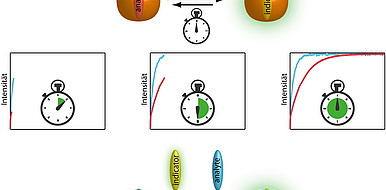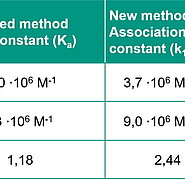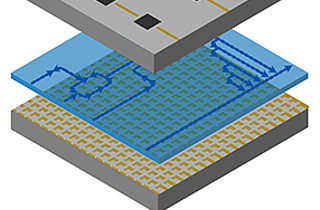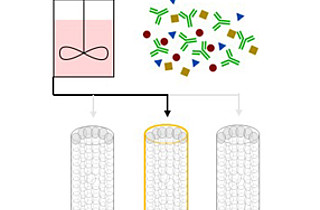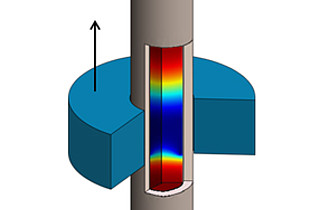Detection of analytes using binding kinetics
In biological, pharmaceutical and supramolecular analysis, established analytical methods are faced with the challenge of qualitatively and quantitatively determining unknown analytes in a sample at unknown concentrations.
State of the art
For this purpose, indicator-displacement assays (IDA) and competitive-binding assays (CBA) are applied in practice. These methods are based on the principle of a competitive displacement reaction: a selective receptor of a receptor-indicator-complex binds the analyte that is to be detected on contact. The indicator is thereby displaced, producing a color change or fluorescence that is measurable as a spectroscopic signal. However, the strength of the signal depends on the concentration of the analyte in the sample, which is typically unknown in practice.
Technology
Scientists at the Institute of Nanotechnology (INT) at KIT have developed a new analytical method that observes the binding behavior in a reversed process, the analyte displacement assay (ADA), and in a time-resolved manner (kinetic analyte-displacement assay, kinADA). In this process, a continuous measurement of the signal changes allows the evaluation of thermodynamic and kinetic reaction data. This analytical method also determines the kinetic selectivity at the endpoint (i.e., completion) of the reaction in addition to the equilibrium selectivity of a receptor, which is generally the sole focus. The resulting reaction profile represents a "kinetic fingerprint" which enables the identification of analytes. For evaluating the reaction data, an open-source software was developed and is readily available.
Advantages
The advantage of the method lies in the improved and also accelerated possibility of analyte-differentiation based on their characteristic receptor binding kinetics. Therefore, instead of using costly, highly selective bioreceptors, it is now possible to employ known, chemically robust and inexpensive materials as receptor components, whose practical use has been hindered so far. However, the method can also be used to further improve the selectivity of bioreceptors, for which the differentiation of structurally similar analytes ("cross-reactivities") still poses a problem in some cases.
Options for companies
KIT is looking for industrial partners for application-specific development, for sampling and productive use of the method. Possible applications could be in physiological analysis, water analysis, chemical analysis, genetic and cell research as well as gas sensoring.
Your contact person for this offer

Innovation Manager Karlsruhe Institute of Technology (KIT)
Innovation and Relations Management (IRM) Phone: +49 721 608-25587
Email: rainer.koerber@kit.edu

